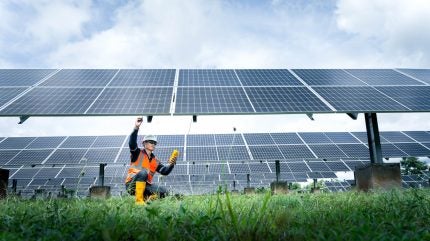
China has witnessed a 1.6% year-on-year decrease in carbon dioxide (CO₂) emissions despite a surge in power demand in the first quarter of 2025, based on the analysis by the Centre for Research on Energy and Clean Air (CREA).
This shift is attributed to a significant rise in electricity supplied by new wind, solar, and nuclear capacity, which offset coal-power output.

Discover B2B Marketing That Performs
Combine business intelligence and editorial excellence to reach engaged professionals across 36 leading media platforms.
Based on official statistics and commercial data, the analysis indicates that China’s CO₂ emissions have been stable or declining for over a year.
However, they linger just 1% below the latest peak, suggesting that a short-term increase could propel emissions to a new record high.
CREA’s analysis indicated that the growth in clean power generation has surpassed both current and historical averages in electricity demand, leading to a reduction in fossil fuel use.
Furthermore, power-sector emissions saw a 2% year-on-year decline in the 12 months leading up to March 2025. If this trend persists, it could signal a peak and sustained downturn in China’s power-sector emissions.

US Tariffs are shifting - will you react or anticipate?
Don’t let policy changes catch you off guard. Stay proactive with real-time data and expert analysis.
By GlobalDataThe analysis also found that US-China trade tensions have spurred China to pivot its economy towards domestic consumption rather than exports.
Additionally, a new pricing policy for renewables that is set to take effect soon has triggered a rush to install capacity before its implementation.
The reduction in emissions from the power sector, primarily due to a 4.7% drop in thermal power generation using coal and gas, was complemented by improvements in coal power plant efficiency and an increase in renewable energy generation.
The China Wind Energy Association anticipates a record-setting installation of 105GW to 115GW in wind projects for the current year, with the China Electricity Council projecting 120GW power capacity additions.
The China Photovoltaic Industry Association is forecasting an 8% to 23% decrease in installations from the previous year’s record level of 278GW.
China’s nuclear construction is also accelerating, with 10GW of reactor projects approved in April, adding to the clean power supply for the coming years.
The trajectory of China’s CO₂ emissions will depend significantly on the targets set in the forthcoming five-year plan and the economic policy response to US tariffs and other challenges.
The new renewable electricity pricing policy and the upcoming 2035 climate targets under the Paris Agreement will play crucial roles in shaping China’s emissions trajectory.
China’s policy decisions in the coming years will be pivotal in determining whether the nation’s emissions will continue to decline or rise as it approaches 2030.
Last month, the Global Wind Energy Council (GWEC) reported that the wind industry added 117GW of new capacity in 2024, with China leading global installations, followed by the US, Germany, India, and Brazil.





